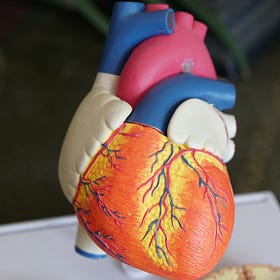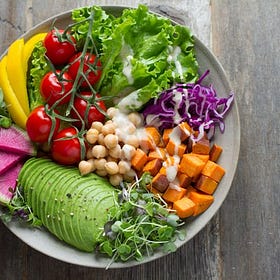Blood Clotting Is Necessary For Wound Healing But May Be Deadly In Heart Attacks
Some clots are necessary for our body to conduct repairs. Others can lead to death. That's worse.
Our blood is a very unique fluid. It doesn’t just contain water. It contains a whole load of other dissolved substances such as proteins, electrolytes and vitamins, as well as other insoluble components such as the red blood cells.
As such, our blood can do a lot of things that other fluids can’t really do — and that is chiefly because of what else is inside our blood.
One of the major things that our blood can do is to clot.
When we accidentally cut ourselves with a sharp object, for instance, our blood will leak out from the blood vessels that have been injured.
If the leak isn’t plugged up, we’d be continuously leaking blood with every pumping action that our heart makes. The larger the cut, the more quickly we’d be losing blood from the circulatory systems.
So we do need our blood to clot somehow.
And that’s where we call on the platelet cells
The platelets are cells in our blood that facilitate clotting. According to the University of Rochester Medical Center, “a normal platelet count is 150,000 to 450,000 platelets per microliter of blood.”
When we cut ourselves, a pro-inflammatory signal is released (accompanied by the symptoms of pain and swelling around the injured area), telling the platelet cells in vicinity to swarm the site of injury and form a plug to prevent any further loss of blood.
Proteins involved in the clotting mechanism
Prothrombin is an inactive enzyme that is produced within our liver that facilitates clotting. It is cleaved by the prothrombinase enzyme into its active form, thrombin.
It is the presence of this thrombin that signals the platelets to clump together and form a clot.
In addition, blood-soluble fibrinogen proteins can be converted by thrombin into insoluble fibrin to bolster the mechanical strength of the clot and prevent premature clot ruptures.
The activation of the clotting mechanism also causes the platelets to produce thromboxane, which further promotes clotting by acting as a positive feedback mediator to recruit even more platelets to the site of damage.
And then the repairs to the injury commence.
Of course, when the injury has been repaired, all that clotted material has to be eliminated.
During the period of injury, there is a flood of pro-inflammatory cytokines being released into the blood — the platelets also facilitate the release of those cytokines.
During the recovery period, though, there has to be a balancing effect with the release of more anti-inflammatory cytokines by the immune system’s cells to quell the raging effects of the pro-inflammatory cytokines.
The plasmin enzyme is activated to start degrading the fibrin when the anti-inflammatory cytokine concentrations increase, such that the clot can be broken down and digested up, and everything resumes normalcy from there.
The only evidence that is left after a large cut is a scar, whereas smaller cuts may not leave visible scars at all.
The regulation of the clotting and the clot removal process is therefore heavily dependent on how well the inflammatory signal is regulated.
What happens when the inflammatory signal isn’t well regulated?
We have to notice that the pro-inflammatory signal following an injury results in formation of clots, while an anti-inflammatory signal is required to faciliate clot elimination.
Part of this can be related back to our diet, as this article states:
Indeed, the Inuit, with their high intake of long-chain omega-3s, have been noted to have a lower platelet count, reduced platelet reactivity, prolonged bleeding times and a lower ratio of proaggregatory thromboxanes versus antiaggregatory prostacyclins.
Maintaining a good dietary ratio of omega-3 fatty acids to omega-6 fatty acids supports a reduced platelet reactivity and a lower incidence of clotting.
Unfortunately, the modern diet that most people are consuming is much higher in omega-6 fatty acids than it is in omega-3 fatty acids, which promote thromboxane formation and would result in clotting occurring more readily. The dietary ratio is important here.
This enhanced clotting activity poses a problem in people with chronic inflammatory diseases.
For example, people who are experiencing heart disease would not desire a better clotting activity. They’d be even more fearful about it. Doctors prescribe drugs such as aspirin to these patients because it is useful for blood thinning and preventing clotting from occurring that readily.
Aspirin works by inhibiting the cyclooxygenase (COX) enzymes from synthesising thromboxane from arachidonic acid (the most common omega-6 fatty acid that is found in our body), hence facilitating a reduction in clotting activity.
It’s not going to reduce the risk of heart attacks - because it doesn’t influence the activity of live foam cells that are trapped within an atherosclerotic plaque.
These foam cells will still eventually eat their way out of the plaque:
Now, Seriously, What's So Tricky About Cholesterol?
This article is the final part of a 3 part miniseries. The first 2 parts can be found at:
And they will force the plaque to rupture and find their way into the blood.
The very first instinct is to swarm the contents that spilled out of the rupture and form a clot around it.
Aspirin affects the rate of clotting but not the rate of plaque rupture.
The problem with the plaque rupturing is that those plaque contents will be swarmed by platelets and clotted, and the clot formation is facilitated by higher than usual levels of thromboxane in the blood in a pro-inflammatory state.
The more reactive the platelets, the bigger the clot. Where the clot gets directed to go can eventually result in unpleasant situations, such as:
1. If it is pumped into a major artery supplying blood to the heart and blocks that artery, we’d see a heart attack occurring.
2. If it lodges in an artery going up to the brain, we’d see a stroke.
The size of the clot matters, but it doesn’t mean that the clot won’t form when there’s aspirin. It forms less readily, and it will be smaller in size.
When people say that omega-3 fatty acids are important for heart health, they’re not exactly wrong, but omega-3 fatty acids aren’t the only essential nutrient. The complexity of our body necessitates far more nutrient support than just omega-3 fatty acids in supporting heart health. Here are
10 Nutrients That Support A Healthy Heart
Supporting cardiovascular health is not an easy thing to do. We eat food. We exercise. We get stressed by work. We sleep. All these actions do contribute to the overall state of our immune system.
Do feel free to share this article and hit the “subscribe” button to get more updates about the science concepts in nutrition and health, all deconstructed nicely for your convenient perusal!




